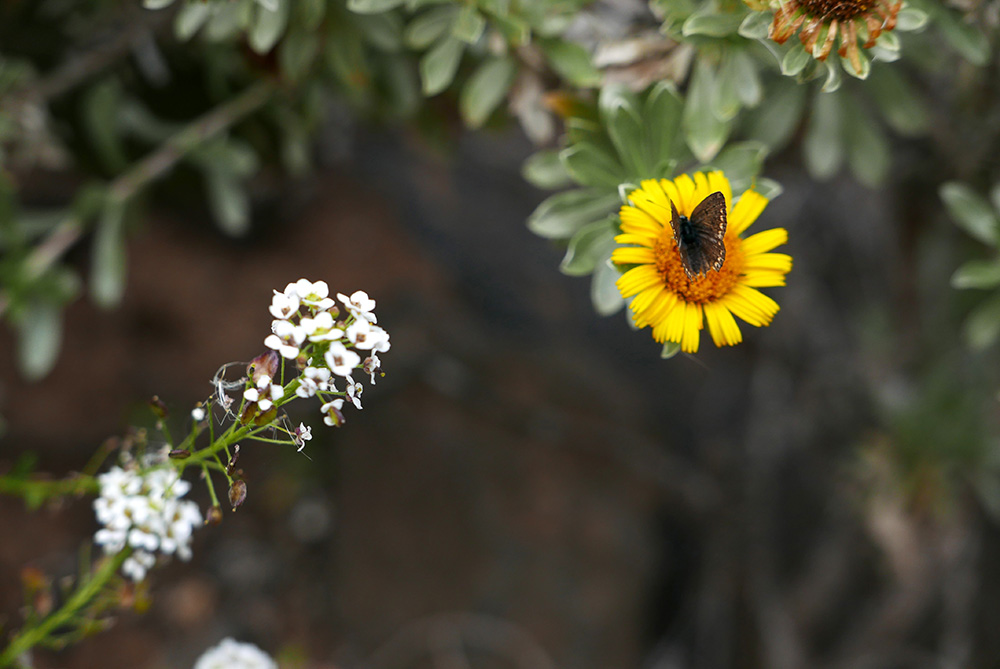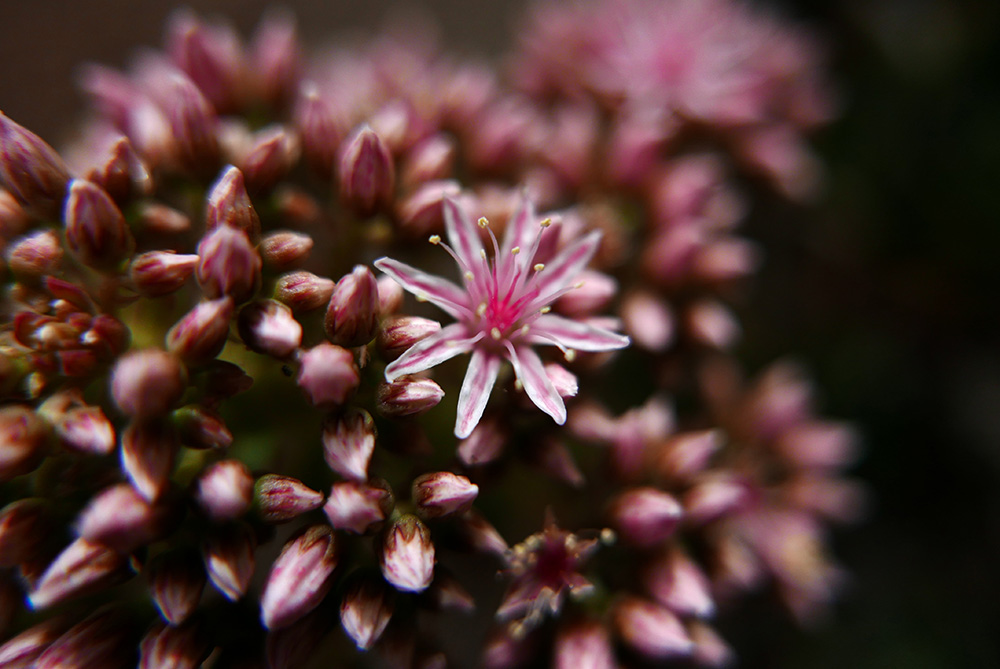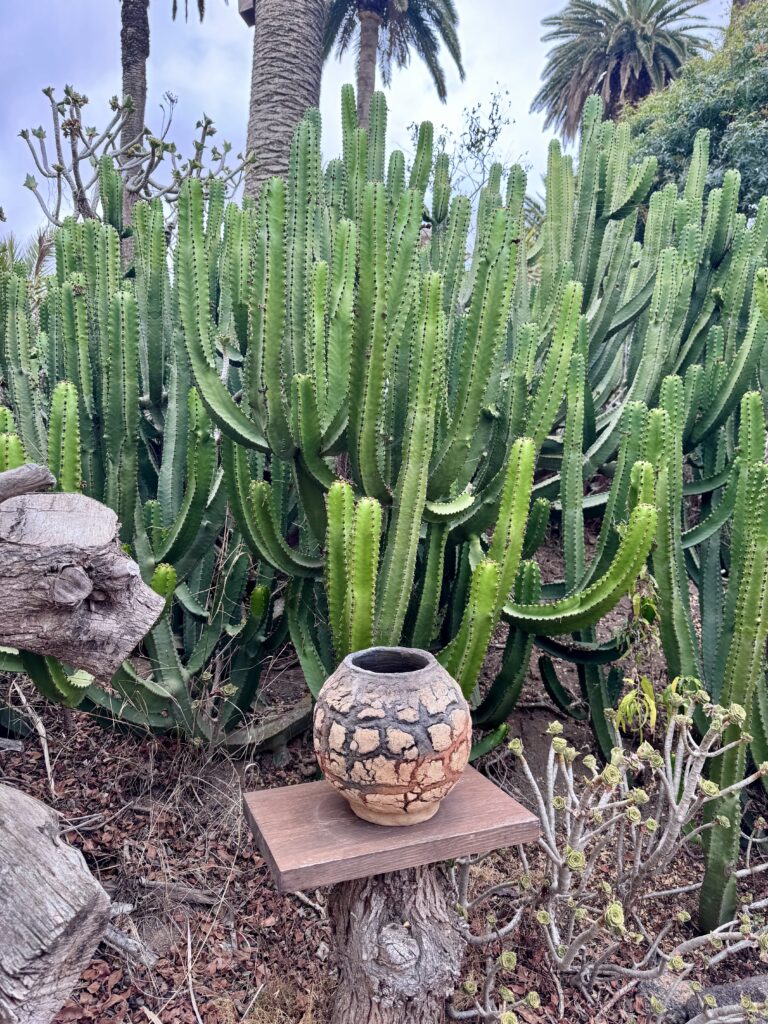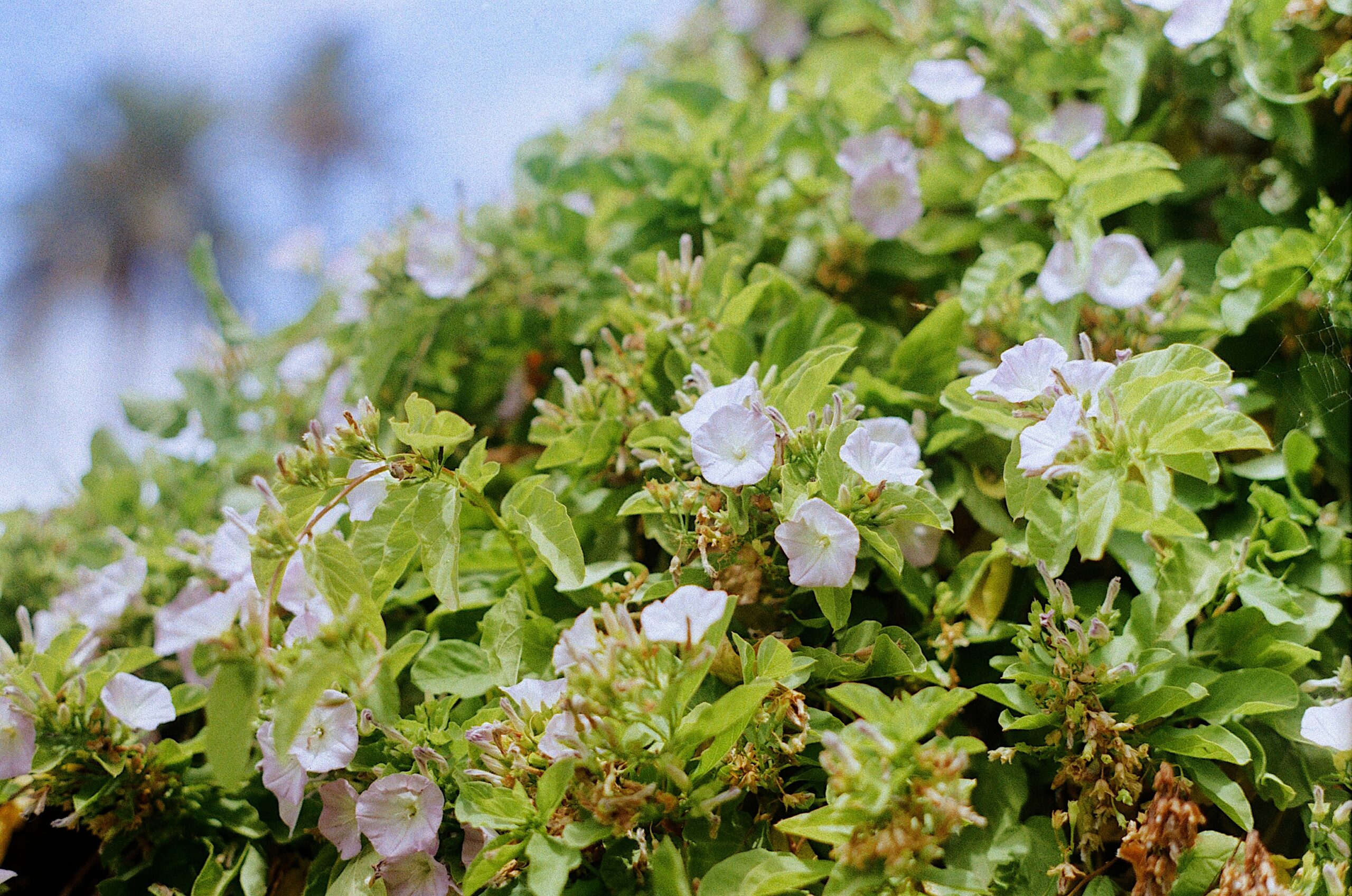The plants that have survived on this desert island since it emerged from the floor of the Atlantic Ocean through a series of volcanic eruptions, are the basis of a unique ecosystem. Haria is a little cooler and wetter than the south of the island and is home to most of our rare flora. With an annual rainfall similar to the nearby Sahara, Lanzarote is a true desert island. Despite this we have more unique native plants than any other Canary Island – tough conditions can drive evolution. Most of the species here are endangered, categorised as being on the ‘Red-List’. Many of our native plants are descended from Mediterranean species that perished during the last ice age.

The garden is laced with paths that twist around its long, rambling grounds that rise and fall at different levels, navigating from shaded areas of trees to vistas, grottoes and ponds. The history of the garden has resulted in a landscape that has evolved gradually over the last four decades, with species introduced gradually through much trial and error – employing a re-wilded approach, where species must eventually establish themselves with little assistance for us – bringing forth an ecosystem that very much belongs in this landscape.

Every species of plant provides food and habitat for a variety of insects, which in turn feed reptiles and birds. Having evolved over four millions of years to suit local conditions they can tolerate Lanzarote’s wind, heat and aridity better than most imported alternatives. While people struggle to keep their exotic roses alive in Lanzarote, this garden blossoms and stays green throughout the year with minimal care. Despite many of Lanzarote’s endemic species being on the endangered list, and as with all the Canary Islands, native plants are so easy to grow and can be incredibly beautiful! Protected from goats, these plants can develop far beyond the stunted specimens found in the wild, into the most spectacular forms. Many have medicinal properties, as the Canarian people have long known through the long tradition of herbal medicine based on their unique plants.


Around the garden, areas of shade with small patios have been laid out for visitors to sit and enjoy the different spaces. There are many traditional Canarian ceramic vessels created by local artist Chiche, along with other sculptures and artworks made in-situ by friends and visiting artists.


